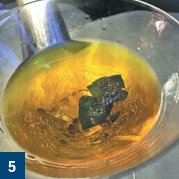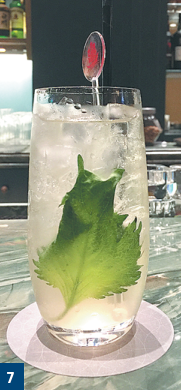Sips of the Silk Road highlight legacy of traders

5 Gold Martini
Creator: Frederick Ma, The Black Moth, Beijing
A martini to make James Bond whimper, the use of saffron gin and gold makes this one worthy of any Persian ruler's banquet.
Silk Road fun fact: Highly valued as a drug and aphrodisiac, saffron was used by Alexander the Great to heal his battle wounds, Laura Kelley writer in The Silk Road Gourmet. From Fertile Crescent and Persian roots, saffron's golden hues and rich blanket of gentle flavor has been used as an ingredient in wine, rice, curries and stews for millennia.

6 Tomato and Cheese
Creator: Jackael He, Portman's bar, Shanghai
The namesake Italian imports blossom in a mix of Capano Punt e Mens vermouth, the aromatized wine Lillet blanc, and tomato water with a few drops of celery bitters - "a fresh, long and easy aperitif drink people can have before dinner".
Silk Road fun fact: The ground seeds of cumin for centuries have been a staple in traditional spice powders, from Indian garam masala to some Chinese five-spice mixtures. In ancient times, they were used to pay taxes in Rome, but the Chinese never used them for that purpose.

7 Hazaki Fizz
Creator: Sami Mersel for O'Hara's bar at The Astor Hotel, Tianjin
Shiso leaf-infused gin, fresh lemon juice, sugar syrup, vanilla extract and lemonade make a great summer refresher.
Silk Road fun facts: The native origins of the pungent shiso leaf (perilla) are said to be the mountainous terrains of India and China. It spread throughout China centuries ago, and was introduced to Japan in the eighth or ninth century. Sweet vanilla, meanwhile, was introduced to Madagascar in the 19th century, when French colonialists brought vanilla pod-producing orchids from Mexico. A recent influx of Chinese investors has led to increased productivity to meet rising international demand.
















